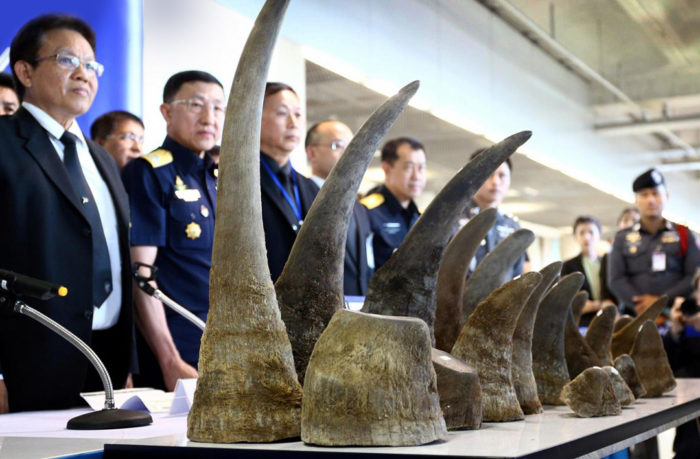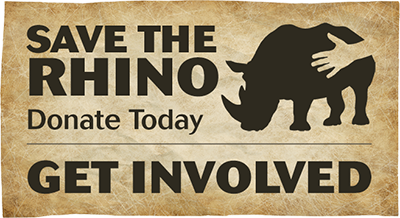
Over a thousand rhino are being killed every year by poachers for their horns
Rhino horn has been used traditionally by some cultures for both medicinal and ornamental reasons. In traditional Asian medicine, it was used in recipes for common ailments such as fever reduction, gout, rheumatism, and as a detoxifying agent. A few African cultures, like those found in Yemen, used them as ceremonial dagger handles and some Asian cultures found value as ornamental libation cups and carvings.
 The current crisis, however, is being fueled largely by the growth of a wealthier, urban middle class in SE Asia, particularly within Vietnam, where such a commodity is regarded as a status symbol and is often given as a gift to colleagues or those in a position of authority. There is also the belief that rhino horn can be used effectively as a cure for hangovers (the “millionaire’s detox,” as it is commonly called). In the mid-2000’s, a rumor was spread in Vietnam that it could cure aids and cancer thus further enhancing the popularity of the commodity. While Vietnam and China are currently considered to be the largest consumers of rhino horn, other countries, such as Thailand, Laos, Japan, North Korea, and Malaysia, have been implicated as well.
The current crisis, however, is being fueled largely by the growth of a wealthier, urban middle class in SE Asia, particularly within Vietnam, where such a commodity is regarded as a status symbol and is often given as a gift to colleagues or those in a position of authority. There is also the belief that rhino horn can be used effectively as a cure for hangovers (the “millionaire’s detox,” as it is commonly called). In the mid-2000’s, a rumor was spread in Vietnam that it could cure aids and cancer thus further enhancing the popularity of the commodity. While Vietnam and China are currently considered to be the largest consumers of rhino horn, other countries, such as Thailand, Laos, Japan, North Korea, and Malaysia, have been implicated as well.

The result is that rhino horn now fetches upward of $50,000/kg on the black markets (making it more valuable than gold), with organized crime syndicates trafficking these illegal products across the world hidden in suitcases and commercial shipping containers, in many cases bribing corrupt official along the way.
Most Asian consumer countries have driven their own rhino to extinction so traffickers have turned to the world’s last remaining populations. South Africa now has approximately 75% of the world’s last remaining rhino and so is seen as the “hot spot” in terms of the rhino crisis. Since 2007, rhino poaching has increased in South Africa by more than 9,000% with one rhino poached every eight hours. In short, the number of deaths due to poaching now exceeds the number of births and we are, in effect, beyond the “tipping point” in terms of the rhino’s long-term survival.









